A pair of London Navy Colts
for the Canadian militia
A pair of London 1851 Navy Colts from the batch of 800 that were shipped to Montreal Canada in 1856. Five hundred and fifty six were issued to the Upper Canada (Ontario) and 255 to Lower Canada (Quebec) Militia. The militia was the forerunner of the Royal Canadian Mounted Police.
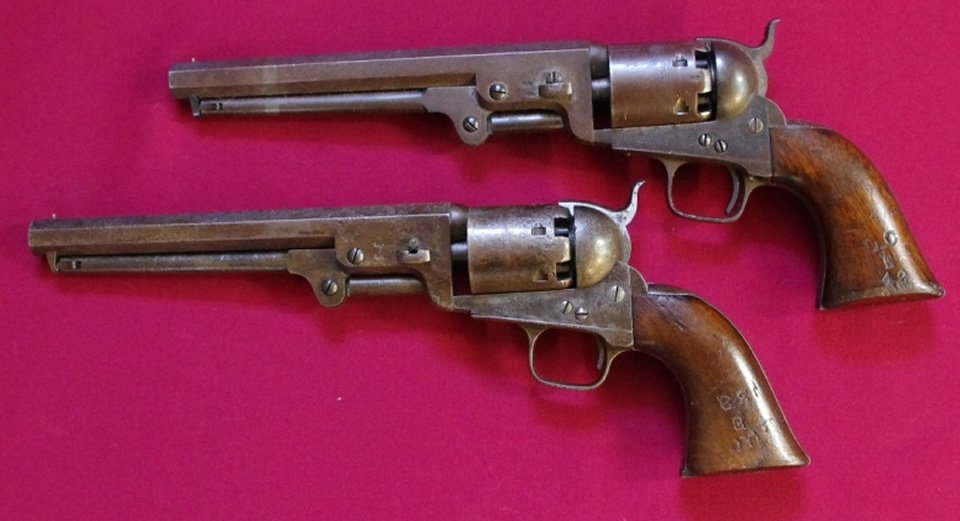
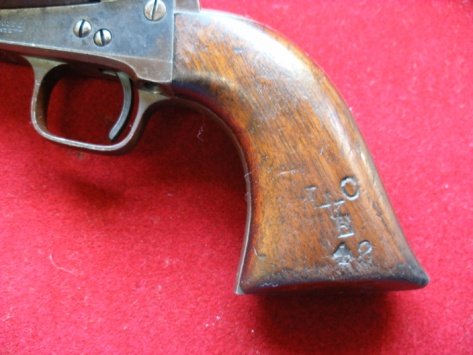
Butt marked LC E 42 denoting LC Lower Canada E the military district of the Cookshire troop and number 42 being the issue number.
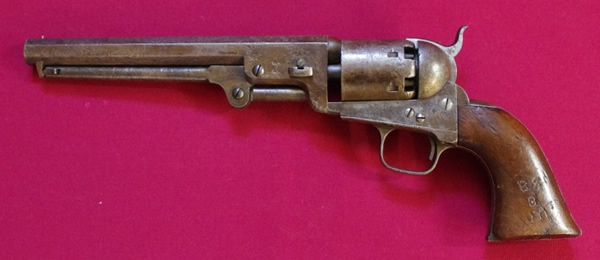 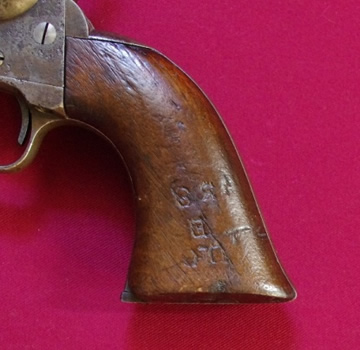
Butt marked UC E 38 denoting UC Upper Canada E the military district of the Second York troop and number 38 being the issue number.
MAP SHOWING UPPER AND LOWER CANADA
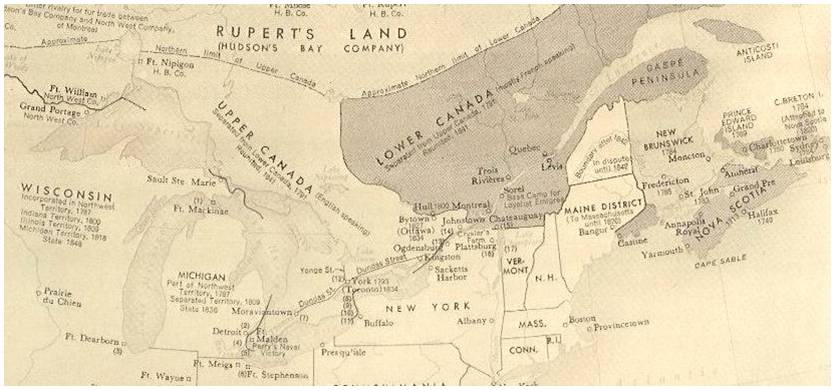
Due to Britain’s involvement in the Crimea in 1854 the effective army in Canada was less than 1,900 men. It was decided to make the Canadian Government responsible for its own defence. Parliament passed the Militia Act of 1855. This created a 5,000 man ‘Active Volunteer Militia Force’. This semi-professional army needed to be equipped and outfitted. In 1855 the money was made available for rifles, swords and pistols to be purchased of the best quality and at the most reasonable price.
Colt offered to supply 400 .36 calibre 1851 Navy Colts for the price of 2 pounds and 10 shillings = equivalent to £2.50 per revolver.
The butts were stamped by the stores in Toronto for Upper Canada and in Montreal for Lower Canada.
In 1879 the revolvers were sold off as surplus and one of the replacements was the 7½” nickel-plated .45 calibre Colt Model 1878. These remained in service until the turn of the Century and saw service in the North West Rebellion of 1885 and the Boer War 1899-1901 in South Africa.
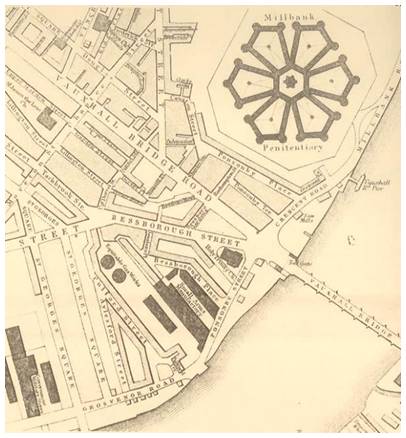
After the Great Exhibition of 1851 at Crystal Palace in London, Colt saw the opportunity to open a factory on 1st January 1853 at Bessbourgh place Millbank near Vauxhall Bridge just across the road to Millbank Prison, which is now the site of the Tate Gallery. Colt was a shrewd business man and he knew if he wanted to sell his revolvers to the British Government they would have to be made in Britain with British workers and materials. Colt was also bringing mass production to Britain whereas the British were still making all their guns by hand.
Sales didn’t go quite as Colt had hoped and with the end of the Crimean war and the formation of the London Armoury Company, Colt decided to close the factory after making less than 40,000 1851 Navy Models at the end of 1856 but he retained his London agency at 14 Pall Mall London.
|





